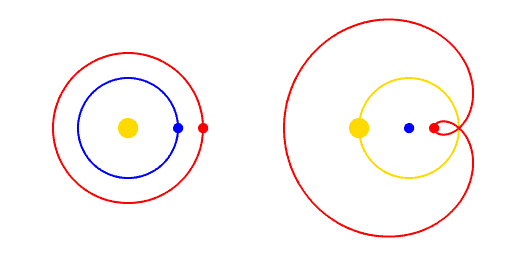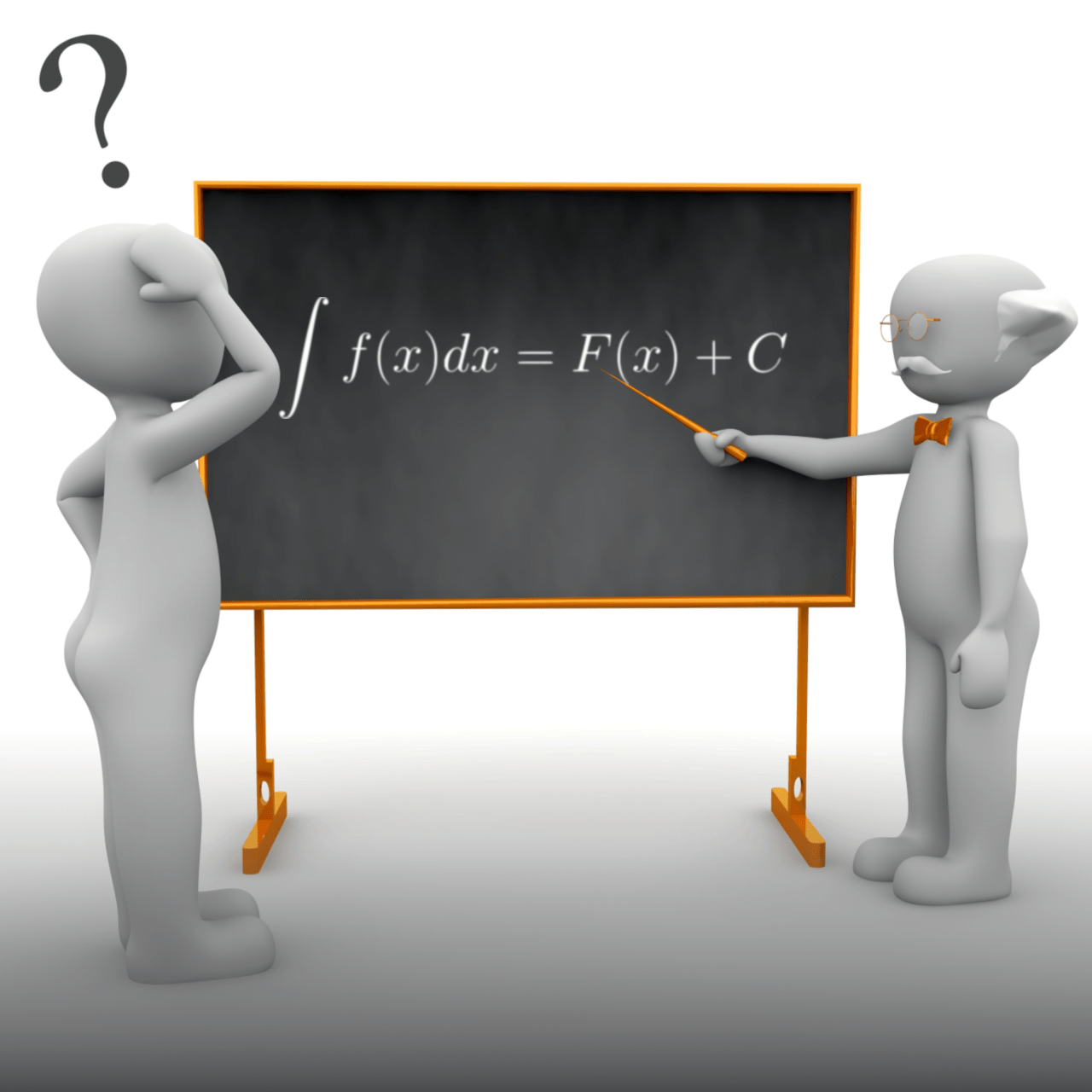Why Did Copernicus Propose Heliocentrism?
The Copernican heliocentric model was not the victory of science over the religious superstition prevailing in the Middle Age. In fact his system was neither simpler nor more accurate than Ptolemy’s geocentric model. Copernicus nonetheless proposed the heliocentric model and it was accepted by not a few astronomers, because Neoplatonism that worshipped the Sun was in fashion in those days. The climate background of the sun worship is the modern Little Ice Age, since people tend to accept the common sense of geocentric cosmology in warm periods, while it is doubted in cool periods.

Contents
1. Did the Copernican theory have scientific rationality?
It is quite natural for us to assume the Earth is at rest and all the heavenly bodies in the sky. That is why the geocentric model was supported from ancient times. Some ancient Greek philosophers, notably Aristarchus of Samos proposed a heliocentric model, but they were in a minority. The geocentric model had been the dominant cosmology compatible with Christianity in Europe until the 16th century.
Strictly speaking, the question whether it is the Sun or the Earth that moves is different from the question whether the center of the universe is the Sun or the Earth. For example, Aryabhata, a mathematician-astronomer in the medieval India adopted the geocentric model but insisted that the earth rotates about its axis daily. Alhazen, a scientist in the medieval Arab, held the similar view. These models can be regarded as transitional ones.
Among many geocentric models Claudius Ptolemy’s system that appeared in the age of the Roman Empire had reached a high degree of perfection. His work Almagest was the most authoritative in the medieval Europe, but Nicolaus Copernicus published On the Revolutions of the Celestial Spheres (De revolutionibus orbium coelestium) in 1543 and insisted a heliocentric model against the Ptolemy’s first in the modern Europe.
The right one of the following figures is the heliocentric celestial model proposed in De revolutionibus, where only the Moon revolves around the Earth and Mercury, Venus, Earth, Mars, Jupiter and Saturn revolve around the Sun (SOL), which is located at the center of the universe, while the outer sphere is immobile. The left one is a geocentric model of the same period, where Moon, Sun, Venus, Mercury, Mars, Jupiter and Saturn revolve around the Earth.

Later Johannes Kepler and Galileo Galilei succeeded to the heliocentric model and their theories became the paradigm of the modern astronomy. The animation below illustrates two models to explain the apparent retrograde motion of Mars based on simplified heliocentrism (left) and geocentrism (right). The orbit of Mars of the former is simpler than that of the latter. So, today scientists adopt the former when they explain the planets’ motion in the solar system.

Can we then say that the Copernican heliocentric model was the victory of science over the religious superstition prevailing in the Middle Age? Many people think so, but is this established view true? According to Thomas Kuhn, “Copernicus’ system is neither simpler nor more accurate than Ptolemy’s[4]" and there was no scientific rationality to say that the former was superior to the latter.
Kuhn explained how complex the Copernican model was, using the following figures. In (a) the Sun is at S, and the Earth, E, revolves on a circle whose center, OE, revolves slowly about a point O, which in turn revolves on a sun-centered circle. In (b) Mars is placed on an epicycle revolving on a deferent whose center, OM, maintains a fixed geometric relation to the moving center OE of the earth’s orbit.

In 1609 Kepler found that the orbit of every planet is an ellipse with the Sun at one of the two foci and the velocity of every planet is inversely proportional to its distance from the sun[6]. Copernicus, however, tried to explain the motion of planets by the combination of uniform circular motions and that is why his model became so complex. We can find no practical merits in calculating a planetary orbit following such a complex model. Why then did Copernicus think that his system was better than Ptolemy’s? Why did it fascinate not a few astronomers?
The answer to this question is not easily disentangled from the technical details that fill the De Revolutionibus, because, as Copernicus himself recognized, the real appeal of sun-centered astronomy was aesthetic rather than pragmatic. To astronomers the initial choice between Copernicus’s system and Ptolemy’s could only be a matter of taste, and matters of taste are the most difficult of all to define or debate. Yet, as the Copernican Revolution itself indicates, matters of taste are not negligible. The ear equipped to discern geometric harmony could detect a new neatness and coherence in the sun-centered astronomy of Copernicus, and if that neatness and coherence had not been recognized, there might have been no Revolution.[7]
In De revolutionibus Copernicus insisted that the geocentric model had no ground. That is true, but, as a general principle, it is arbitrary which place to choose in order to observe a motion. If there was no big difference in simplicity and accuracy between the heliocentric and the geocentric models, it should be “matters of taste" which to choose. The Copernican assertion below indicates his ground for the heliocentric model is religious rather than scientific.
Truly in the middle of everything the sun is at rest. For in this most beautiful temple, who would place this lamp in another or better position than that from which it can light up the whole thing at the same time? In fact, the sun is not inappropriately called by some people the lantern of the universe, its mind by others, and its ruler by still others. Hermes Trismegistus labels it a visible god, and Sophocles’ Electra, the all-seeing. Thus indeed, as though seated on a royal throne, the sun governs the family of planets revolving around it.[8]
In the end the Copernican heliocentrism was not the victory of science over the religious superstition but a new religious belief against the traditional one. If that is the case, what religion did Copernicus believe in? The most promising candidate is Neoplatonism, a heliolatrous religion which was in fashion in those days.
2. Why did Neoplatonism result in the geocentric model?
Neoplatonism was originally a school of mystical philosophy that Plotinus developed in the 3rd century Roman Empire based on the teachings of Plato. Neoplatonism underwent a revival in Florence under the Medici in the 15th century Renaissance, after Marsilio Ficino translated the Greek works of Plato, Plotinus and other Platonists into Latin, making them widely accessible.
Influenced by the Oriental mysticism that came into vogue in the Roman Empire, Neoplatonism was a philosophy somewhat different from the original one of Plato, Platonism. Plotinus, however, did not think that he created a new philosophy or made a new interpretation of it. He thought he was a genuine successor of Platonism, so there was no such name as Neoplatonism in those days, which Friedrich Schleiermacher adopted in the 19th century to distinguish it from the original.
The foundation of Platonism is the theory of Forms (εἶδος) or theory of Ideas (ἰδέα). According to Plato, they are abstract objects beyond sensible material objects. Let me give an example of the form of circles. There are many round material things in this word, but none of them has the shape of a perfect circle by definition of geometry. We can nonetheless recognize the Forms of complete circles, because we once belonged to the world of Forms and can recollect them. This hypothesis found in Meno is the doctrine of recollection (ἀνάμνησις). The world of Forms is the real world because of its completeness, while this sensible material world just mimics the real world.
There is a hierarchy in the world of Forms. It is owing to the Form of the Good (τοῦ ἀγαθοῦ ἰδέαν) that we can recognize the Forms in general. In The Republic Plato compared the relation between the Form of the Good and the Forms in general to that between the Sun and visible things in the sunlight.
The sun is he whom I call the child of the good, whom the good begat in his own likeness: as the good is in the intelligible region to reason and the objects of reason, so is the sun in the visible world to vision and the objects of vision.[9]
The Form of the Good created the Forms in general, which in turn created the material world. This theory of Platonism can be applied to the Christian teachings that the benevolence of God created this world. Although Plotinus was not a Christian, he called the Forms of the Good the One (τὸ ἓν) and offered a monotheistic interpretation, identifying the One with God. According to Plotinus the Reason (νους) is the emanation (ἀπορροή/ἀπόρροια) from the One and the Soul (ψυχή) is the emanation from the Reason. Plotinus compared the One to the Sun, the emanation of the Reason to the solar radiation, the Soul to the Moon shining in the sunshine.
The sun, however, is just a metaphor of the Form of the Good both for Plato and Plotinus. It is not only different from the Form of the Good but also from the Forms in general. It is just a material object of our sense. But Ficino identified the Form of the Good with the Sun[10] and thus turned Neoplatonism into a heliolatrous philosophy or even a heliolatrous religion. Kuhn said that Ficino’ sun worship might have an influence on the heliocentric model of Copernicus.
Ficino wrote, for example, that the sun was created first and in the center of the heavens. Surely no lesser position in space or in time could be compatible with the sun’s dignity and creative function. But the position was not compatible with Ptolemaic astronomy, and the resulting difficulties for Neoplatonism may have helped Copernicus to conceive a new system constructed about a central sun.[11]
The next question we must ask is why the sun worship prevailed in the days of Copernicus.
3. What is the background of geocentrism and heliocentrism?
The celestial bodies whose motion the pre-modern astronomy had to explain were confined to the Sun, the Moon and the five planets. So long as all the bodies concerned are only eight including the Earth, neither geocentric models nor heliocentric ones are erroneous and it is “matters of taste" or matters of religious cosmology which models to choose. Contemporary scientists, of course, do not justify their astronomical theories in terms of religious belief but religious motivation had played an important role until the age of Copernicus and Kepler, when astronomy was not completely separated from astrology.
In Mysterium Cosmographicum (The Cosmographic Mystery) published in 1596, Kepler supported the heliocentric theory of Copernicus from a religious motive based on the idea that the sun must be located at the center of the cosmos because it was created after the Father. It was Astronomia Nova (New Astronomy) published in 1609 that first established the heliocentric theory on a scientific basis. The heliocentric theory had not been scientific until the publication of this book with the subtitle “astrophysics (physica coelestis)" that includes the first two laws of planetary motion.
What is the background of the religious motivation before Astronomia Nova? Looking back upon the past before the Scientific Revolution, we can find that people in warmer periods tend to think the Sun moves, while those in cooler periods tend to think the Earth moves.
| Period | Cosmology |
|---|---|
| The ancient cool period (800-250BC) | Philosophers of the Ancient Greece such as Aristarchus of Samos proposed heliocentric models. |
| The ancient warm period (250BC-AD400) | Ptolemy completed his geocentric model in this Roman Warm Period. |
| The medieval cool period (AD400-950) | Aryabhata insisted that the earth rotates about its axis daily and his view was accepted in India. |
| The medieval warm period (AD950-1250) | Ptolemy’s geocentric model dominated the golden age of Islamic science. |
| The modern cool period (AD1250-1830) | The heliocentric models by Copernicus, Kepler and Galileo were accepted. |
| The modern warm period (AD1830-present) | Scientists no longer regard the Sun as the center of the universe. |
Every culture has more or less the element of sun worship, but its adoration becomes strong in cool periods, when the activity of the Sun becomes weak. If you feel it paradoxical, you should ponder when rainmaking rituals take place. Those who believe in the rain god worship him when they are suffering from drought. Similarly it is not until the weak activity of the Sun brings about a crop failure that they appreciate the value of the Sun and worship the Sun deity.
When the activity of the sun is strong, we can enjoy an abundant harvest without any special endeavor. When it gets weak, the result is the reverse and we must move for survival. The loss of the activity of the Sun is easily conceived of as the stop of the moving Sun and our motion is associated with the motion of the Earth. So, people accept the common sense of geocentric cosmology in warm periods, while some cast a doubt upon the common sense in cool periods.
You would feel such an explanation absurd, but it is the prejudice of the modern who are accustomed to scientific rational explanations. Astronomy had not been completely released from astrology that gave a symbolic account of celestial events until the age of Copernicus. In fact Ptolemy was not only an astronomer who wrote Almagest but also an astrologer who wrote Tetrabiblos (Τετράβιβλος). Copernicus learned astrology as well as astronomy[12]. It is no wonder the heliocentric model of Copernicus was based on symbolic implication.
4. References
- ↑Petrus Apianus; Gemma Frisius . “Petri Apiani cosmographia, per Gemmam Phrysium, apud Louanienses medicum ac mathematicum insignem, restituta." 1539.
- ↑Nicolaus Copernicus. “De revolutionibus orbium coelestium." Book 1, Chapter 10.
- ↑cleonis. “Illustration of the apparent retrograde motion of Mars. The apparent retrograde motion is an artifact of mapping the motions of the objects of the solar system in a coordinate system that is itself in accelerated motion.." Licensed under CC-BY-SA.
- ↑The Copernican Revolution: Planetary Astronomy in the Development of Western Thought]. Harvard University Press; Revised edition (January 1, 1992). p. 171.
- ↑Thomas S. Kuhn. The Copernican Revolution: Planetary Astronomy in the Development of Western Thought. Harvard University Press; Revised edition (January 1, 1992). p. 170.
- ↑Johannes Kepler. Astronomia nova αιτιολογητοs, seu physica coelestis, tradita commentariis de motibus stellæ Martis, ex observationibus G. V. Tychonis Brahe. Chapter 32.
- ↑Thomas S. Kuhn. The Copernican Revolution: Planetary Astronomy in the Development of Western Thought. Harvard University Press; Revised edition (January 1, 1992). p. 172.
- ↑“In medio vero omnium residet Sol. Quis enim in hoc pulcherrimo templo lampadem hanc in alio vel meliori loco poneret, quam unde totum simul possit illuminare? Siquidem non inepte quidam lucernam mundi, alii mentem, alii rectorem vocant. Trimegistus visibilem Deum, Sophoclis Electra intuentem omnia. Ita profecto tanquam in solio regali Sol residens circum agentem gubernat Astrorum familiam." Nicolaus Copernicus. De revolutionibus orbium coelestium. Book 1. Chapter 10.
- ↑“τοῦτον τοίνυν, ἦν δ᾽ ἐγώ, φάναι με λέγειν τὸν τοῦ ἀγαθοῦ ἔκγονον, ὃν τἀγαθὸν ἐγέννησεν ἀνάλογον ἑαυτῷ, ὅτιπερ αὐτὸ ἐν τῷ νοητῷ τόπῳ πρός τε νοῦν καὶ τὰ νοούμενα, τοῦτο τοῦτον ἐν τῷ ὁρατῷ πρός τε ὄψιν καὶ τὰ ὁρώμενα." Plato. Republic.book 6, section 508b – 508c.
- ↑Liber de sole (date) 1487 (author) Marsilio Ficino
- ↑Thomas S. Kuhn. The Copernican Revolution: Planetary Astronomy in the Development of Western Thought. Harvard University Press; Revised edition (January 1, 1992). p. 131.
- ↑Sheila Rabin. Nicolaus Copernicus. Stanford Encyclopedia of Philosophy.








Discussion
New Comments
No comments yet. Be the first one!